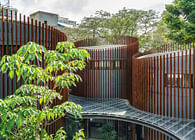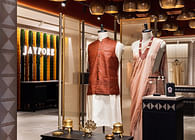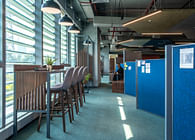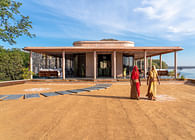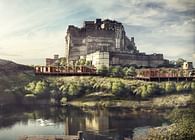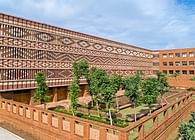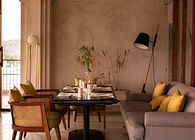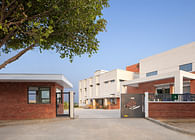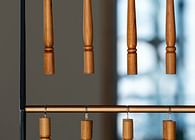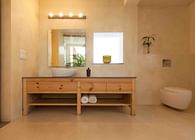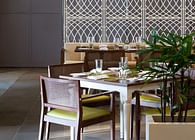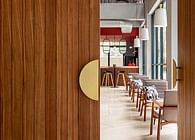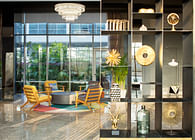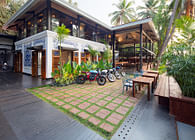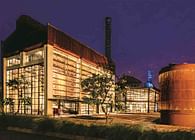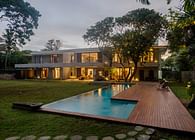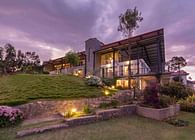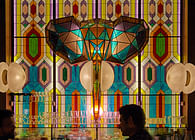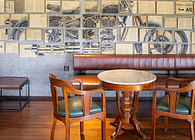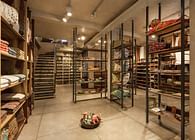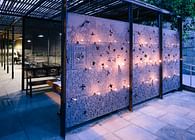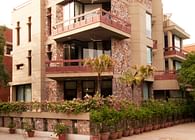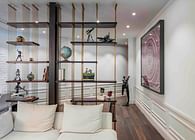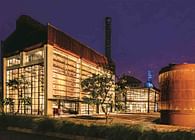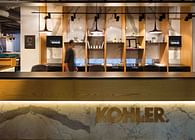
New Delhi, IN
GPL’s Upcoming Mixed-Use Development in Chembur Echoes the Glory of Mumbai’s Cinematic Legacy
GPL’s mixed-use development in Chembur, located on the site of the erstwhile R K Studios, aims to add to Mumbai’s exuberant and ever-changing skyline while retaining the cultural and historical legacy of the site—evocative of the promise and wonder that the City of Dreams brings with it.
The design vision aims to bring legacy, luxury and placemaking together; enabling the public to enjoy a taste of the indulgence and luxuryof a time which produced legendary showmen, heroes and heroines who captured the imagination of millions; while also allowing for the renewal of a site steeped in nostalgia and heritage, both tangible as well as intangible.
The plot, bounded by the Sion-Trombay Road to its north and the CG Road to its south, anchors the foot of the Chhatrapati Shivaji Maharaj Chowk, a bustling intersection delineated by the Mumbai-Pune Highway. With a history stretching back decades, the site, and the immediate neighbourhood—boasting several film studios—had acquired a landmark status, becoming synonymous with Mumbai’s film industry itself.
Following a fire in 2017, a portion of the original buildings was burnt down and the site fell into disuse and disrepair. Salvaged remnants and memorabilia have been meticulously integrated within the design narrative to retain the historic legacy and illustrate a sense of resurgence and continuity that is a hallmark of people’s fascination with the movies.
Post the fire, reinstating its identity as a landmark became paramount—an exercise in placemaking for the architects, with the design addressing the needto actively engage with and reinstate RK Studios in the public imagination. Marking a significant departure from the studio’s earlierphysical constraints, where extensive public engagement with the site occurred only on certain occasions such as Ganesh Chaturthi, the new complex has been envisaged as an inviting, porousprecinct that draws crowds from the streets into the public plaza. With a new metro line underway along the Sion-Trombay Road, the site’s renewed spirit further reinforces public integration with the complex.
The mixed-use design integrates an amenity and commercial retail zone at the ground and first levels with three adjacent residential towers above, housing two, three and four BHK units up to a height of fifty-two metres, tracing a U-shaped configuration to maximize the open spaces available and utilize the compactness of the site. This intervention seeks to re-establish the site’s presence, not only within its immediate context but also when seen from a distance. The residential towers surround a double-storied semi-open recreational zone, offering amenities that include a club, pool, and gymnasium. The half-Olympic swimming pool is placed in the center of the zone, as a visual anchor, and is surrounded by dense plantation to provide a green oasis in the midst of the bustling metropolis. The commercial zone occupies the east and northeast of the plot, creating a continuous shopping frontage along the adjoining street. The residential units have been placed strategically to ensure maximum privacy and exclusivity, without compromising on exterior views and natural light. The orientation of balconies is a highlight of the design — all units provide expansive views of the court or a panorama of the city beyond while maintaining a high degree of privacy. The building configuration creates a distance of over forty metres between each balcony of the towers occupying the corners. In addition, most residential typologies are designed to enable seamless cross-ventilation within the volumes, with three-side open configurations, accounting for the extremely humid climate of the region.
The project pays homage to the Art Deco style of the 20s and 30s, when it was gaining prominence in Mumbai, in conjunction with the advent of cinema, and seeks to tie the sophisticationand timeless elegance of those decades with the visual vocabulary of the construction.
On the upper levels, fluted grooves run throughout the exterior envelope, to create an impression of refined proportionsas derived from the Art Deco style. All the windows are framed by curved architectural fins, to provide shading from sunlight and the excessive Mumbai rains, without hampering the views to the city. Metal jaalis, in the same language as used in the lower levels, occur as highlight elements to bring a sense of luxury and tie the entire building façade together.The lighter expression on the residential façades serves as a contrast to the heavier stone-clad base while retaining similar proportions and frames.
The retail and amenity zone at the lower levelsconsists of a series of stone-clad arches, highlighted with brass trims and metal elements such as jaalis, railings, lamps etc. Jaalis fashioned out of brass embellish the ground floor arches and serve as reminders of the luxurious indulgence of a forgotten era. The retail area features a sunken court and a double height atrium, capped by a metal-and-glass structure to allow natural light to flow into the basement as well, and giving a variety of public experiences. At the lower levels, the arch profiles are observed as recurring elements—punctuating the façade, serving as frames for shading devices, and even as part of the landscape paving—a vivid contemporary adaptation of Art Deco.
Drawing inspiration from the glitz and glamour of the site’s legacy, Studio Lotus has explored placemaking opportunities throughout the property—fitting the compound walls for instance, with inserts recovered from the fire —creating a series of immersive and tactile experiences that transport the visitors to another era.
Status: Unbuilt
Location: Mumbai, IN
Firm Role: Principal Architect





